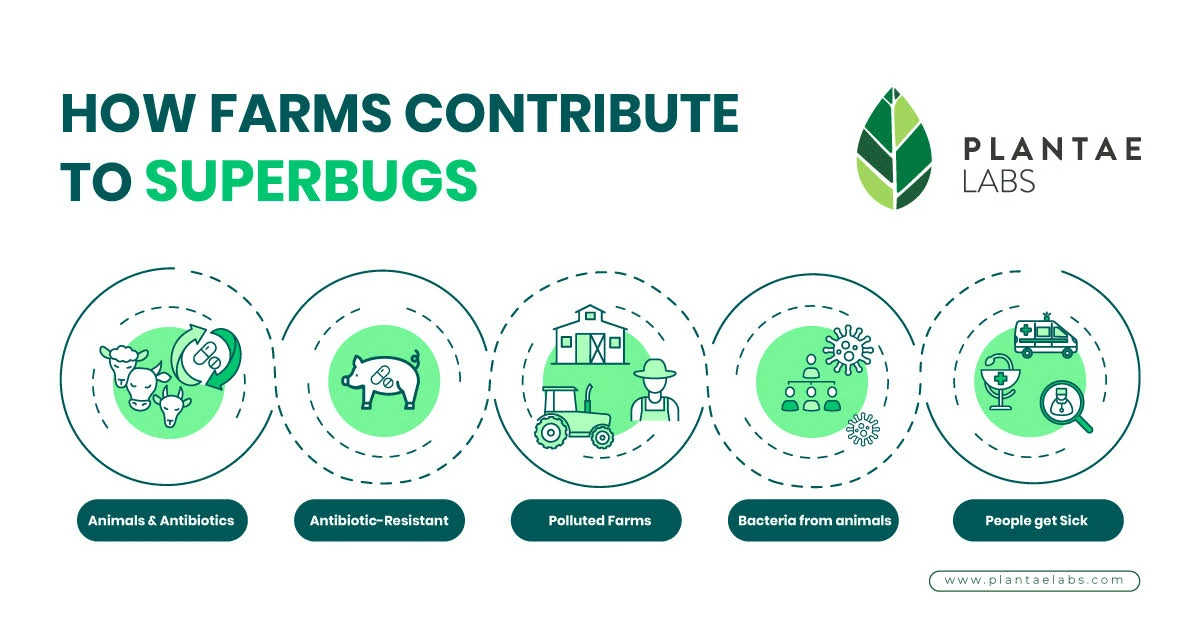The problem of antibiotics in the animal industry.
People and animals share many things, such as some diseases, bacteria and of course the use of antibiotics. Over the years, farm animals have received not only antibiotics to treat diseases but also, sub-therapeutic dosage as growth promotors to enhance their performance. This practice has triggered the presence of antibiotic-resistant bacteria or “superbugs”. The problem is that these bacteria, once present in the gut of the animals, can contaminate the meat, and be transferred to people.
Fortunately, there is an increase in the awareness of reducing or avoiding the use of antibiotics in the animal husbandry industry. In 2017, The Guardian published an article stating that farming organizations in the UK set targets to reduce the use of antibiotics in raising animals for food. The article says that stopping the widespread overuse of antibiotics in animals could be one of the main ways to decrease resistance in humans (1). One example is the Multi Resistant Staphylococcus Aureus (MRSA), a superbug, multi-host bacteria pathogen spread in hospitals around the world and responsible for thousands of deaths. An extensive study published in Nature (2) shows that a reservoir for these types of bacteria is cows spreading the bug to human populations through milk, meat or through the environment.
The targets.
One of the sustainable development goals of the United Nations is to decrease antibiotic resistance. To achieve this aim, the high level of antibiotics used in food producing animals must decrease, especially in intensive animal production systems (4). However, most farmers are aware of the decrease of productive parameters and increase of disease or death in the animals.
The UK five-year national action plan called “Tackling antimicrobial resistance 2019.2024” targets a 25% reduction in the use of antibiotics in food-producing animals by 2020 and set new objectives for 2025 (3).
Some pilot studies in the field.
A recent study from BCM Veterinary research, shows the effect of removing antibiotics from the diet of pigs. Results showed that pigs treated and not treated with antibiotics show similar performance and no differences in mortality rate. They conclude that the removal of prophylactics in feed-antibiotics is totally feasible alongside improved husbandry (5).
In the 60th conference of the International Meat Industry in 2019, a group from the University of Belgrade reviewed the use of different alternatives to replace antibiotics as preventive and prophylactic agents, especially non-antibiotic growth promotors. One of these alternatives is phytobiotics, which are a novel feed additive derived from herbs, spices and essential oils. These are obtained from natural sources and are not linked with resistance. Moreover, they do not create residues in the meat (6). All these characteristics show that phytogenics are an excellent alternative to antibiotics in animal production.
How can Plantae Labs help?
Some of the most promising phytogenics are our natural extracts based on Saponins. These compounds have an antimicrobial and antiprotozoal capacity due to their membranolytic properties forming an irreversible complex with the cholesterol of the membrane causing cell lysis (7).
In Plantae Labs we have developed natural solutions based on Quillaja Saponaria Molina, an endemic tree from Chile, rich in triterpenoid saponins, which through a special technology of concentration, encapsulation and drying, produce a range of unique ingredients called Feed Sap® and Sap Capsules®.
Several trials in different research centers have been done to prove the anticoccidial effect of our Feed Sap® and Sap Capsules® products, showing promising results when considering the aim of reducing and avoiding the use of antimicrobials in animal husbandry.
If you need more information about our portfolio of ingredients check out this link:
Bibliography.
- https://www.theguardian.com/environment/2017/oct/27/farming-sector-aims-to-cut-antibiotics-use-to-help-tackle-human-resistance
- Richardson, E. J., Bacigalupe, R., Harrison, E. M., Weinert, L. A., Lycett, S., Vrieling, M., … & Fitzgerald, J. R. (2018). Gene exchange drives the ecological success of a multi-host bacterial pathogen. Nature ecology & evolution, 2(9), 1468-1478.
- https://www.theguardian.com/environment/2016/oct/17/use-of-strongest-antibiotics-rises-to-record-levels-on-european-farms
- Diana, A., Boyle, L.A., Leonard, F.C. et al.Removing prophylactic antibiotics from pig feed: how does it affect their performance and health?. BMC Vet Res 15, 67 (2019). https://doi.org/10.1186/s12917-019-1808-x
- https://www.who.int/foodsafety/areas_work/antimicrobial-resistance/amrfoodchain/en/
- R Markovic et al2019 IOP Conf. Ser.: Earth Environ. 333 012029
- Actual and potential applications of Yucca schidigera and Quillaja saponaria saponins in human and animal nutrition, P:R Cheeke


